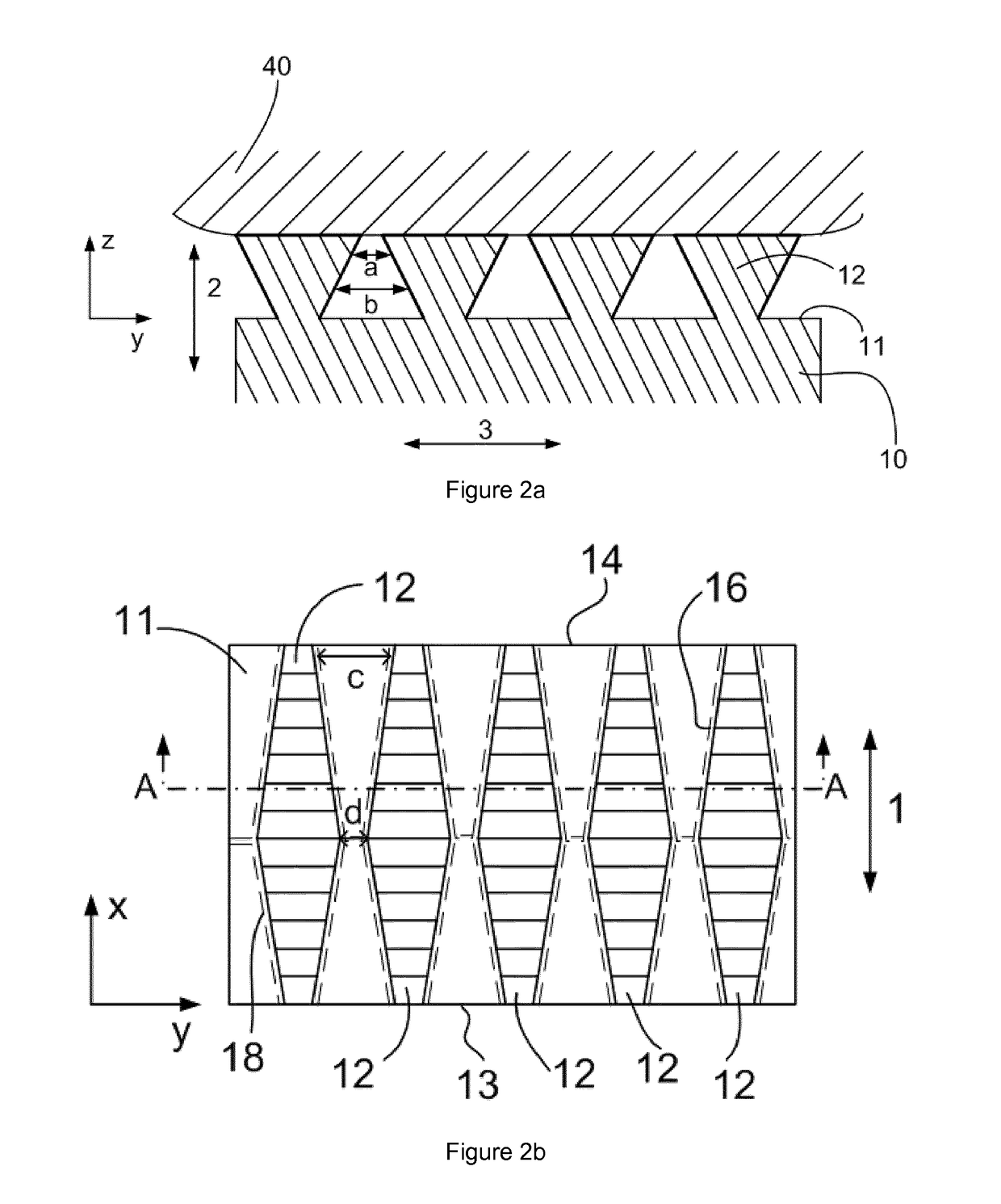Base for an orthodontic appliance
a technology for orthodontic appliances and bases, applied in the direction of brackets, arch wires, etc., can solve the problems that metal appliances generally have limited chemical bonding, and achieve the effects of convenient manufacturing, easy retraction, and convenient manufacturing
- Summary
- Abstract
- Description
- Claims
- Application Information
AI Technical Summary
Benefits of technology
Problems solved by technology
Method used
Image
Examples
Embodiment Construction
[0030]FIG. 5 shows schematically the arrangement of teeth in the lower jaw (mandible). A front portion of the mouth 110 may be referred to as a mesial region. A rear portion of the mouth 120 may be referred to as a distal region. An inner portion of the mouth behind the teeth 130 may be referred to as a lingual region. An outer portion of the mouth 140 may be referred to as a labial region. A mesial-distal direction 115 with respect to a specific tooth (first molar) has been schematically indicated in FIG. 5. Also indicated in FIG. 5 is a lingual-labial direction 135 with respect to the same tooth. This terminology will be adhered to in the present disclosure.
[0031]FIG. 1a illustrates a prior art bracket 20′ having a base 10′. The base may be integrally manufactured with the bracket or may be separately manufactured and subsequently attached to the main body of the bracket. The base 10′ comprises a base surface 11′ which may be slightly concave and may be adapted to fit on a specifi...
PUM
 Login to View More
Login to View More Abstract
Description
Claims
Application Information
 Login to View More
Login to View More - R&D
- Intellectual Property
- Life Sciences
- Materials
- Tech Scout
- Unparalleled Data Quality
- Higher Quality Content
- 60% Fewer Hallucinations
Browse by: Latest US Patents, China's latest patents, Technical Efficacy Thesaurus, Application Domain, Technology Topic, Popular Technical Reports.
© 2025 PatSnap. All rights reserved.Legal|Privacy policy|Modern Slavery Act Transparency Statement|Sitemap|About US| Contact US: help@patsnap.com



